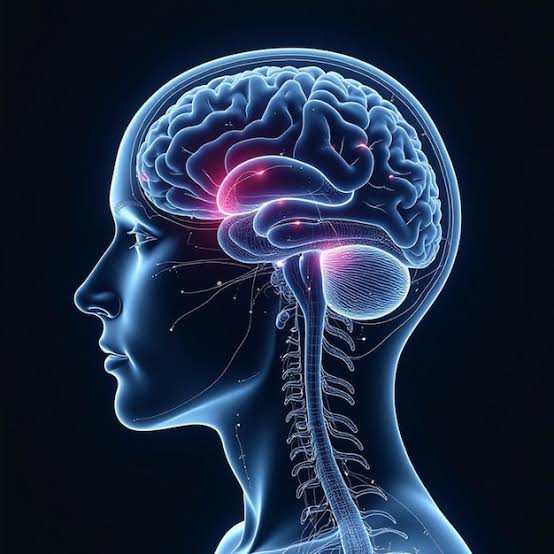Embarrassment is a curious and universal human emotion. It arrives suddenly, often in the most unexpected moments—when we trip in public, mispronounce a word, spill coffee on ourselves, or say something awkward during a conversation. The feeling burns through us like a flash of heat, our cheeks flush, our hearts race, and we often wish we could simply disappear. Yet, while embarrassment seems trivial compared to deeper emotions like grief or love, it serves a profound purpose in the human experience. It is one of the most socially intelligent emotions we possess, deeply tied to our survival as social beings.
Understanding embarrassment requires exploring the complex interplay between biology, psychology, and social behavior. Beneath that fleeting blush lies a remarkable system of emotional regulation that evolved to maintain harmony within our social groups, to protect our reputations, and to foster cooperation. Scientists have long been fascinated by why we feel embarrassed, what happens inside our brains and bodies during the experience, and how this emotion shapes our behavior and relationships.
In exploring the hidden mechanics of shame and embarrassment, we uncover not only the biology of an emotion but also the deep cultural and evolutionary roots of what it means to be human.
The Nature of Embarrassment
Embarrassment is often confused with related emotions such as guilt, shame, or humiliation, but each of these has distinct psychological and social meanings. Embarrassment typically arises in situations where we believe we have violated a minor social norm or made an unintentional mistake that others have noticed. It is usually mild, fleeting, and accompanied by a desire to repair our image.
Shame, on the other hand, is a deeper and more painful emotion that involves a sense of moral failure or personal inadequacy. While embarrassment says, “I did something silly,” shame says, “There’s something wrong with me.” Guilt is another related emotion, but it focuses on the action rather than the self—“I did something wrong, and I should fix it.” Humiliation, in contrast, involves being publicly degraded or intentionally demeaned by others.
What distinguishes embarrassment from these other emotions is its fundamentally social character. It emerges only when we are aware that others might be watching, judging, or evaluating us. It is a self-conscious emotion, meaning it depends on our capacity to reflect on ourselves as social beings, to see ourselves through the imagined eyes of others. This self-awareness is one of the defining features of human consciousness.
The Evolutionary Origins of Embarrassment
To understand why we evolved to feel embarrassed, we must consider the role of emotions in social life. Human beings are profoundly social creatures. For most of our evolutionary history, survival depended on cooperation within small groups. Being ostracized or rejected by one’s tribe could mean isolation, loss of protection, and even death. As a result, natural selection favored psychological mechanisms that promoted group harmony and minimized conflict.
Embarrassment likely evolved as one such mechanism. It acts as a nonverbal signal of remorse or acknowledgment of a social misstep. When we blush or avert our eyes after an awkward moment, we are effectively communicating to others, “I recognize that I broke a norm, and I regret it.” This involuntary display helps to diffuse tension and repair social bonds.
Charles Darwin was one of the first scientists to recognize the evolutionary significance of blushing. In his 1872 book The Expression of the Emotions in Man and Animals, he described blushing as “the most peculiar and the most human of all expressions.” Unlike fear or anger, which are found across many species, blushing appears to be uniquely human. This suggests that embarrassment evolved as part of our complex social communication system—a way to maintain trust and empathy within a group.
The Biology of Embarrassment
When we feel embarrassed, our bodies react in a cascade of physiological changes that can be measured and observed. The most recognizable of these is blushing—a visible reddening of the face, neck, and sometimes ears. Blushing occurs when the sympathetic nervous system, which controls the body’s “fight-or-flight” response, triggers dilation of the blood vessels near the skin’s surface. This sudden rush of blood creates the characteristic flush associated with embarrassment.
The same physiological response that prepares the body to face danger is also activated by social threats. When we perceive that we have violated a social norm or become the focus of unwanted attention, our brain’s threat-detection system interprets it as a kind of social danger. The amygdala, an almond-shaped structure in the brain involved in processing emotional reactions, signals the hypothalamus to release stress hormones like adrenaline. Heart rate increases, pupils dilate, and muscles tense. The body is ready to act, even though the “threat” is not physical but social.
Interestingly, studies using brain imaging have shown that embarrassment activates several regions of the brain associated with self-awareness and social cognition, including the prefrontal cortex and the anterior cingulate cortex. These areas are involved in monitoring social behavior, understanding others’ perspectives, and regulating emotions. The activation of these networks suggests that embarrassment is a deeply cognitive emotion—it arises from our ability to evaluate our own actions in a social context and to imagine how others might perceive them.
The Psychology of Embarrassment
Psychologically, embarrassment serves as a form of emotional feedback. It signals to us that our behavior has deviated from expected social standards and motivates us to correct or compensate for that deviation. This feedback loop is crucial for maintaining smooth social interactions.
When we feel embarrassed, we often engage in behaviors designed to restore social harmony—smiling awkwardly, apologizing, laughing at ourselves, or showing humility. These behaviors communicate that we are aware of the mistake and mean no harm, thus reducing the risk of social rejection. In this way, embarrassment acts as a social lubricant, preventing small breaches of etiquette from escalating into larger conflicts.
The intensity of embarrassment can vary widely depending on personality, culture, and context. Some people are more prone to embarrassment because they have higher levels of self-consciousness or social anxiety. Others may appear relatively immune to embarrassment, either because they are more confident or because they have learned to regulate their emotional responses.
Cognitive scientists suggest that embarrassment also plays a role in self-regulation and learning. By making us aware of our social mistakes, it helps us adjust our behavior to better fit the expectations of our community. In this sense, embarrassment is not a weakness but a powerful teacher that guides social adaptation.
The Social Function of Embarrassment
In everyday life, embarrassment acts as a kind of social signal. It shows that we care about others’ opinions and that we value social norms. When someone displays signs of embarrassment—blushing, stammering, or avoiding eye contact—it often evokes empathy rather than ridicule from observers. People tend to perceive embarrassed individuals as more trustworthy, likable, and cooperative.
Research in social psychology supports this idea. Studies have shown that when people express embarrassment after making a mistake, others are more likely to forgive them and maintain positive impressions. This suggests that embarrassment functions as a mechanism for social repair—it helps to rebuild trust and reinforce social cohesion.
In relationships, embarrassment can even strengthen bonds. Shared moments of awkwardness often become sources of humor and intimacy. When we laugh together about an embarrassing event, we reinforce our connection and mutual understanding. This dynamic highlights the paradoxical beauty of embarrassment: though it feels unpleasant, it often brings people closer together.
Cultural Differences in Embarrassment and Shame
While embarrassment is universal, its expression and interpretation vary across cultures. In some societies, saving face and avoiding public humiliation are deeply ingrained cultural values, making embarrassment a powerful tool for social control. In others, individualism and self-expression are emphasized, and embarrassment may be seen as less consequential.
For example, in many East Asian cultures influenced by Confucian values, social harmony and respect for hierarchy are central. People are taught from an early age to avoid behaviors that could cause shame to themselves or their families. Embarrassment, in this context, is tied to collective reputation rather than individual pride.
In contrast, Western cultures often emphasize personal autonomy and self-confidence. While embarrassment still occurs, it is sometimes treated humorously or even as a mark of authenticity. The ability to laugh at oneself is seen as a sign of emotional intelligence and resilience.
Despite these differences, the physiological responses—such as blushing and increased heart rate—are remarkably consistent across cultures, suggesting that the biological foundations of embarrassment are shared by all humans, even if the social meanings vary.
The Relationship Between Embarrassment and Shame
Embarrassment and shame are closely related but differ in their depth and duration. Embarrassment is typically triggered by minor social mishaps, such as tripping, forgetting someone’s name, or making a small public error. Shame, by contrast, arises from moral or ethical transgressions that threaten our self-concept.
The line between the two can blur, especially when an embarrassing event challenges core aspects of our identity. For instance, being laughed at for poor performance might start as embarrassment but evolve into shame if it undermines one’s sense of competence or worth.
Neuroscientific studies indicate that shame activates similar brain regions to embarrassment but with greater intensity, particularly in areas associated with self-reflection and emotional pain. Chronic or toxic shame can be psychologically damaging, leading to anxiety, depression, and social withdrawal. Embarrassment, however, tends to be brief and adaptive—it helps regulate social behavior without undermining self-esteem.
Embarrassment in the Digital Age
The rise of social media has transformed the landscape of embarrassment. In the past, an awkward moment might be witnessed by only a few people; today, it can be recorded, shared, and viewed by millions within minutes. The internet has amplified both the reach and intensity of social scrutiny, turning private mistakes into public spectacles.
This phenomenon has given rise to a new kind of digital embarrassment—viral humiliation. People who become the subjects of online ridicule often experience profound psychological distress, even if the original incident was trivial. The permanence of digital records means that embarrassing moments can haunt individuals for years, affecting careers, relationships, and mental health.
At the same time, the internet has normalized self-deprecating humor and vulnerability. Many people share embarrassing stories or “fail” moments online as a form of self-expression or relatability. This trend reflects a cultural shift toward authenticity, where showing imperfection is valued as a sign of honesty and humanity.
The Development of Embarrassment in Childhood
Children do not experience embarrassment from birth. It emerges gradually as they develop self-awareness and an understanding of social norms. Developmental psychologists have found that infants begin to show signs of self-conscious emotions—such as embarrassment or pride—around the age of two, when they first recognize themselves in a mirror.
This self-recognition marks the beginning of what psychologists call the “social self.” As children grow and interact with others, they learn which behaviors are acceptable and which are not. Embarrassment becomes a tool for social learning, teaching them to conform to group expectations and avoid behaviors that could lead to ridicule or rejection.
Parents and caregivers play an important role in shaping a child’s sensitivity to embarrassment. Supportive environments help children interpret embarrassing moments as opportunities to learn and grow, while harsh or shaming responses can foster anxiety and low self-esteem.
The Interpersonal Dynamics of Embarrassment
Embarrassment does not occur in isolation; it is a relational emotion that depends on the presence or imagined presence of others. The reactions of those around us greatly influence how we experience and recover from embarrassment.
When observers respond with empathy or humor, the embarrassed person feels reassured, and the social tension quickly dissipates. However, when others mock or criticize, the emotion can deepen into shame or humiliation. This interaction highlights the cooperative function of embarrassment—it relies on shared understanding and mutual forgiveness to restore social balance.
In professional and social contexts, leaders and public figures often face heightened risks of embarrassment due to constant scrutiny. How they handle it—whether through honesty, humility, or defensiveness—can greatly affect their public image. Research shows that admitting mistakes and showing mild embarrassment often makes leaders appear more relatable and trustworthy than those who deny or deflect responsibility.
The Role of Empathy and Mirror Neurons
Empathy plays a key role in both experiencing and witnessing embarrassment. Neuroscientific research has identified mirror neurons—specialized brain cells that fire not only when we perform an action but also when we observe others performing it. These neurons are thought to underlie our capacity for empathy and emotional resonance.
When we see someone trip, stammer, or blush, our mirror neuron system activates, allowing us to “feel” their embarrassment vicariously. This shared emotional experience creates a subtle social bond. It also explains why embarrassment can spread contagiously; we sometimes feel secondhand embarrassment even when we are not directly involved.
Empathy transforms embarrassment from a purely individual experience into a collective one. It reinforces social cohesion by reminding us that everyone makes mistakes and that vulnerability is part of being human.
Healing and Growth Through Embarrassment
Although embarrassment is uncomfortable, it often leads to growth. It teaches humility, compassion, and self-awareness. By confronting our own imperfections, we learn to accept ourselves and others more fully.
Psychologists note that people who can laugh at their embarrassing moments tend to have higher emotional resilience. Humor helps reframe the experience, turning a source of shame into a shared story of humanity. Over time, embarrassing experiences often become cherished memories, told with laughter rather than regret.
Mindfulness and self-compassion practices also help people manage embarrassment more effectively. By acknowledging the emotion without judgment, individuals can reduce its intensity and recover more quickly. Recognizing that embarrassment is universal can also diminish its sting—everyone, regardless of status or intelligence, experiences awkwardness.
The Moral and Ethical Dimensions of Embarrassment
Embarrassment is not just about social mistakes; it also has moral significance. It reflects our sensitivity to social norms and our concern for the well-being of others. When we feel embarrassed, it shows that we recognize our impact on those around us.
In this sense, embarrassment acts as a moral compass. It keeps our ego in check and reminds us of our interdependence with others. A world without embarrassment might be one without empathy or accountability—a world where people act without regard for social harmony.
The Future of Understanding Embarrassment
As neuroscience and psychology advance, researchers are uncovering deeper insights into how embarrassment operates at the intersection of emotion, cognition, and society. New imaging techniques allow scientists to observe the precise neural circuits involved in self-conscious emotions. Social psychologists continue to explore how cultural, technological, and generational factors shape the experience of embarrassment.
There is growing interest in how artificial intelligence and robots might replicate or interpret human emotions like embarrassment. As machines become more integrated into social life, understanding these emotions may be essential for creating empathetic AI that interacts naturally with humans.
Conclusion
Embarrassment, for all its discomfort, is one of the most beautifully human emotions. It reveals our vulnerability, our empathy, and our deep need for social connection. Behind the burning cheeks and awkward silences lies an intricate system that evolved to protect our relationships, regulate our behavior, and strengthen our communities.
We feel embarrassed because we care—about others, about belonging, and about being seen as good and competent members of our group. Far from being a weakness, embarrassment is a sign of emotional intelligence and moral awareness. It connects us to our shared humanity, reminding us that imperfection is not something to hide but something to embrace.
In the end, the hidden mechanics of shame and embarrassment tell a powerful story about what it means to live together. To blush is to be human, and in our moments of awkwardness, we find both humility and connection—the very essence of being part of a social world.






